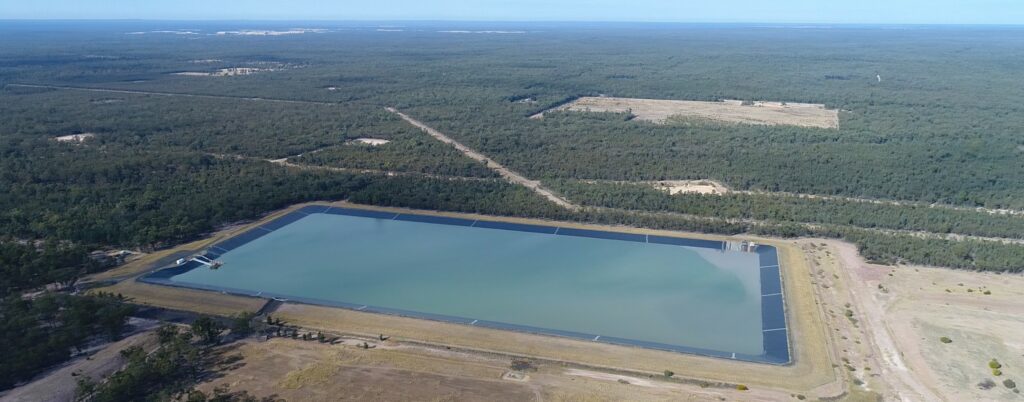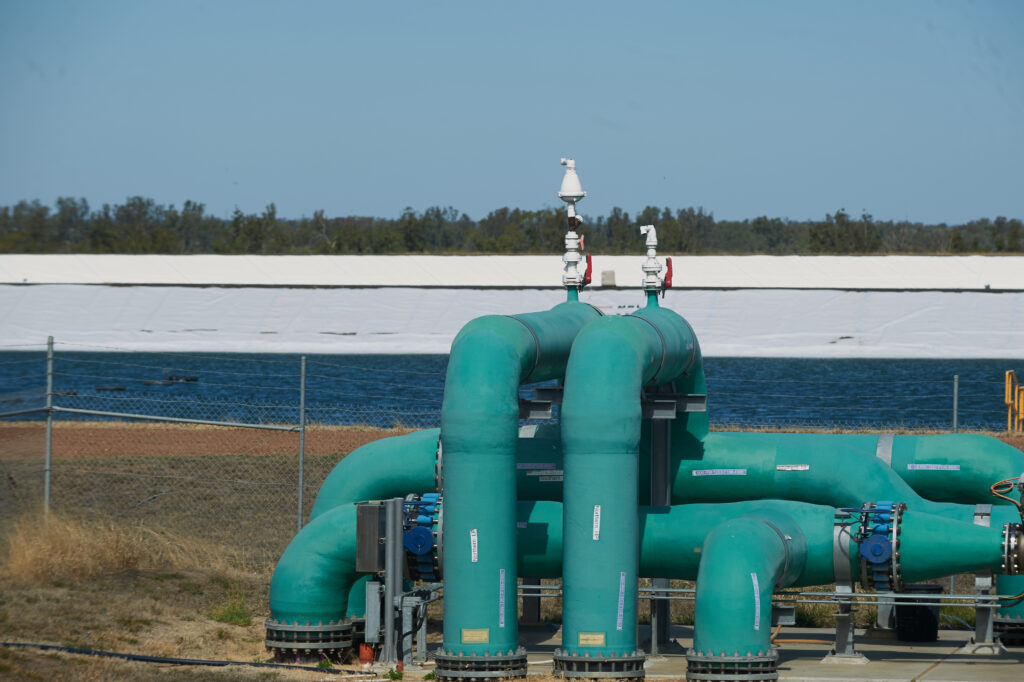Researching potential methane emissions from CSG water holding ponds
CSIRO scientists are donning high-visibility gear and deploying floating flux chambers in the search for more information about the potential for Queensland coal seam gas (CSG) water holding ponds to be a source of methane emissions.
CSG water holding ponds are used by industry to hold water from various stages of gas production, prior to treatment and beneficial re-use. CSG water holding ponds can produce methane, a known greenhouse gas. In Queensland, there are more than 80 CSG water holding ponds operated by industry.
A recent CSIRO desktop study, conducted through CSIRO’s Gas Industry Social and Environmental Research Alliance (GISERA), examined publicly available scientific literature relating to methane emissions from Queensland CSG water holding ponds.
It found limited and highly variable information about methane emissions from CSG holding ponds and that there is no publicly available data on the total methane emissions of CSG holding ponds in Queensland.
The study – Methane contributions from holding ponds – a desktop study to identify emissions potential and controls in CSG holding ponds and other aquatic systems in Queensland – identified opportunities for further investigation.
These further investigations require field work, direct measurement of emissions, and microbiological and geochemical assessment to accurately quantify methane emissions, and identify key controls or contributors to methane emissions from CSG water holding ponds in Queensland.
New research projects approved
GISERA’s Queensland Research Advisory Committee, which is majority controlled by community and independent representatives, has approved two new research projects designed to address key knowledge gaps identified in the desktop study.
The knowledge gaps involve organic carbon inputs to holding ponds (particularly ultra-fine coal particles), microbial dynamics with respect to methane production and consumption in these ponds, and uncertainty of the total amount of methane emissions from such ponds.
The Methane emissions from CSG water holding ponds in Queensland project will directly measure methane emissions from CSG water holding ponds using floating flux chambers, which capture methane and determine the rate (flux) of methane emissions from the water surface.

A CSG water holding pond in Queensland.
CSIRO scientists will consult with CSG companies to select and provide access to around 20 representative CSG water holding ponds and take measurements in summer 2024 and winter 2025.
The Key controls or contributors to methane emissions from CSG water holding ponds project will focus on the role that methane generating and eating microbes, algae, brine and sediment play in the methane emission contributions of CSG holding ponds.
CSIRO scientists will consult with CSG companies to select and provide access to one CSG water holding pond and one CSG brine pond. These ponds will be selected from the list of 20 identified in the companion study outlined above. Scientists will collect samples for water chemistry, microbial community profiling, algae and sediment studies, and the identification of carbon pools. Water will be collected at the surface, middle and bottom of the ponds.

Pumping infrastructure at a lined CSG water holding pond in Queensland.
Desktop findings
The original desktop study, published in September 2023, found that CSG water holding ponds could represent a source of methane emissions, but detailed field surveys are needed to accurately quantify this amount.
Because of the scarcity of research on actual emissions, CSIRO scientists used data relating to non-industry water bodies (natural and constructed) as a proxy to estimate potential emissions from CSG water holding ponds.
Potential emissions varied according to pond size, presence of additional carbon and nutrient inputs, and pond location in either temperate or sub-tropical zones.
Potential calculated methane emissions from CSG water holding ponds based on non-industry water bodies ranged from 15 milligrams per square metre per day (mg/m2/d) to 30 mg/m2/d.
For comparison, reported methane emissions from an urban sewage treatment plant inlet was 28,900 mg/m2/d and reported methane emissions from an 80 hectares (ha) landfill site was 35,000 mg/m2/d.
The concentrations proposed could potentially represent a significant source of methane, given that publicly available data show Surat and Bowen Basin CSG water holding ponds comprise almost 65,000 megalitres (ML) of water with an aggregate surface area exceeding 1,100 ha. For comparison, at full capacity Wivenhoe Dam in Queensland contains 1,165,240 ML and has an area of 10,900 ha.
The desktop study findings and results of the two new research projects when complete will further refine understanding of the potential of CSG water holding ponds to contribute to GHG emissions in the Surat Basin and Western Downs region of Queensland.
The current study and new projects are part of a suite of GISERA research activities in Queensland addressing key areas including methane emissions, groundwater, impacts of hydraulic fracturing, potential human health impacts and socio-economic analysis.
Find out more about other GISERA studies in Queensland
